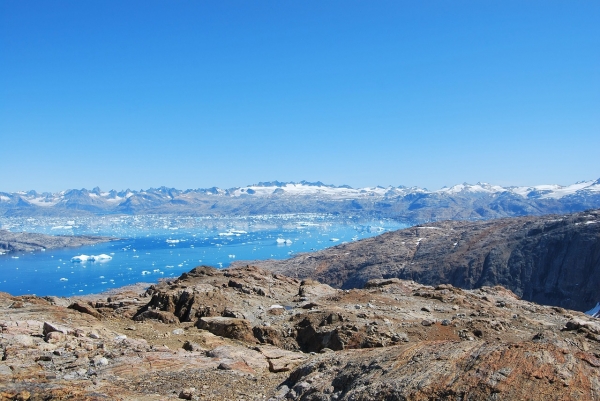For millennia, lakes in Greenland’s dry tundra have locked up huge loads of carbon in their sediment. But as the Arctic becomes warmer and wetter, scientists believe these lakes could become sources of carbon, which would have important consequences for the world’s climate.
A family of muskox rumbles along craggy hilltops overlooking the small parade of humans crossing the West Greenland tundra. Ecologist Václava Hazuková, in the lead, sets a brisk pace as we bushwhack through knee-high willow and birch. Leaning forward under an equipment-filled pack nearly half her size, she high-steps over “pillows and mattresses” — hummocks of plants interspersed with troughs of rain-soaked permafrost. The twin blades of a kayak paddle protrude from Hazuková’s pack, pointing to our destination: Lake SS85, a small, clover-shaped lake some two hours away.
Lake SS85 is one of hundreds of lakes dotting this 90-mile-wide fringe of land between the towering Greenland Ice Sheet and the Labrador Sea. For centuries, 85 and its aquatic neighbors have been ice-covered most of the year. But as the climate has warmed, high-latitude lakes — from the northern United States and Canada to Scandinavia and Siberia — have started to thaw, on average, a week earlier and freeze 11 days later than they did a century ago, according to Sapna Sharma, a biologist at York University in Toronto. The rate of ice loss has sextupled over the past 25 years. Northern lake temperatures are rising more than twice as fast as the global lake average, Sharma says. And nowhere is the climate changing faster than in the Arctic.
Read more at Yale Environment 360
Photo Credit: JChristophe_Andre via Pixabay


